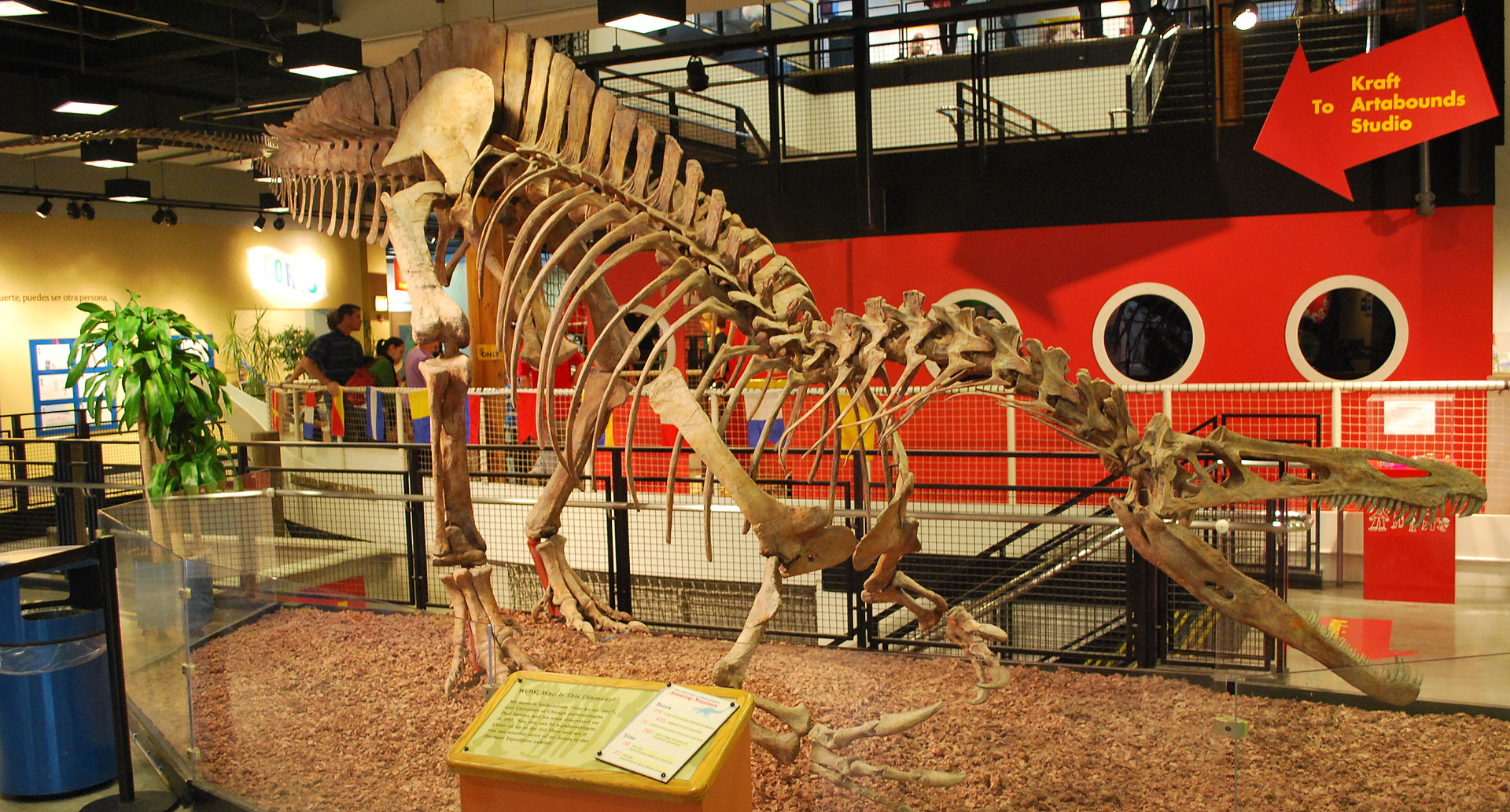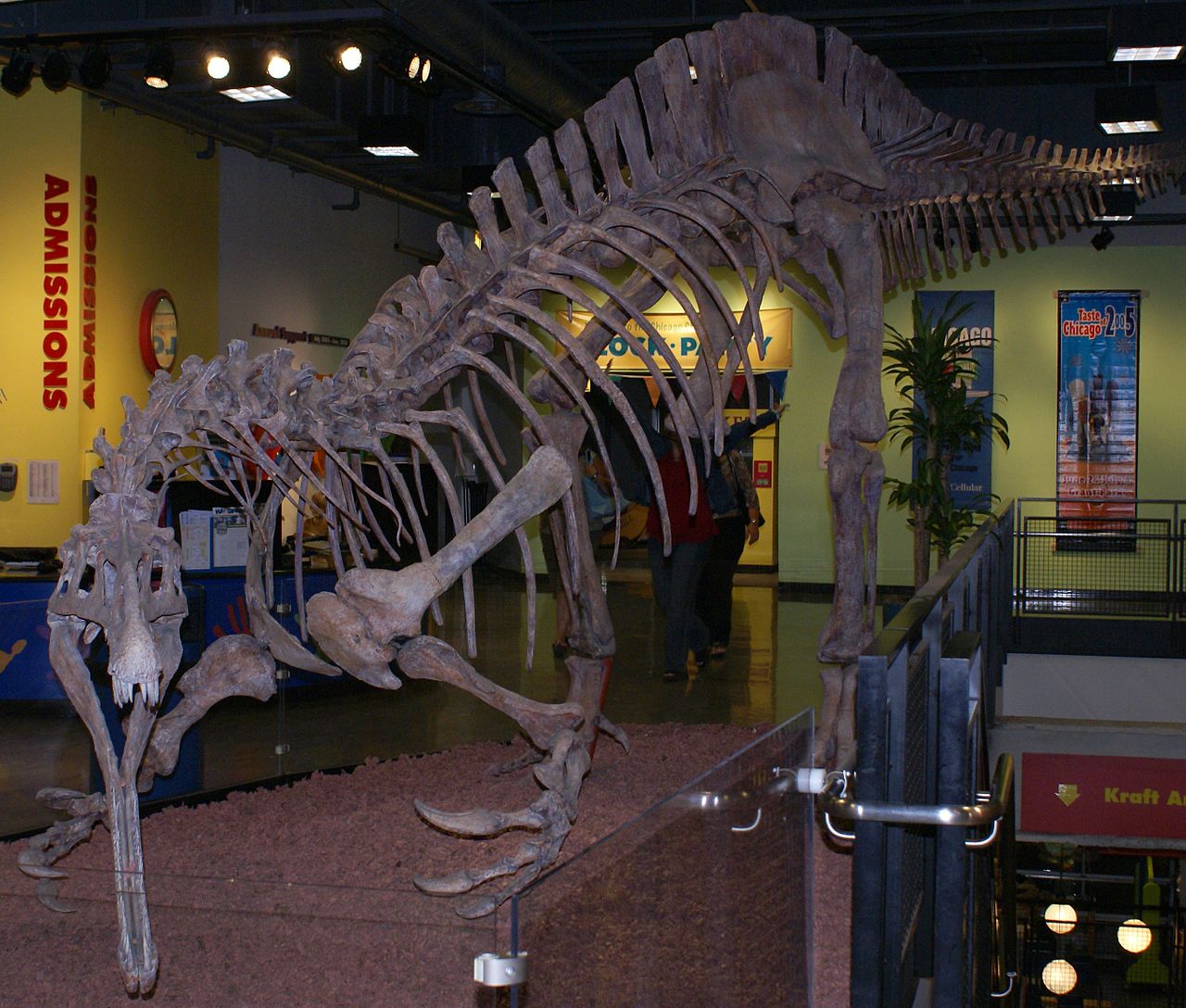We all know and love the new
Spinosaurus aegyptiacus reconstruction right?
"Disenchanting" is how Douglas Henderson described it on facebook. And it does fall a little bit shy of the impressive dual land/water arch predator it has so often been posited to be, especially since a little movie came out (JP3 duh) and our friend the Spino terrorized everything from T-rex to estranged parents. Truth be told it looks a little clunky, a little too front heavy to work right - at least the way we
expect theropods to work since GSP started drawing them as svelte athletes rip roaring across the page. So, yeah I do want to comment on the new Spino reconstruction and yeah there are a lot of people - very knowledgeable ones at that - that would definitely disapprove of what I am going to do before publication of the new material. But I will argue that my interpretation on what was going on with Spino is in fact presaged by what we already know from other members of spinosauridae and yes, as suggested by the title, I think Bakker got the jump on all of us by suggesting way back when that Spinosaurus was a lot more aquatic than generally portrayed. But I will offer my little Antediluvian Salad spin on Spinosaurus and hopefully you find it interesting.
And leave a comment.
![]() |
| Moss Landing/Elkhorn Slough US Army Corps. public domain |
Before I get to Spino itself I want to tell a little story to help illuminate my point. A little tale about kayaking. I do like to kayak and one of the funner places to do so in California is a place called
Elkhorn Slough in the Monterey Bay. It is a tidally influenced estuary and there is always open access to the ocean, especially because of the harbor at the entrance having to be maintained. It is noted for the unique population of sea otters that forage in an estuary as opposed to the ocean - often times within view of the highway that crosses the estuary. These estuarine sea otters have been shown to predate heavily on crabs and, in a classic trophic cascade,
have bolstered stands of eel grass in the estuary. In addition to the otters, there are loads of harbor seal, water birds and miles of watery inlets to explore. It is the type of place that lets you imagine the California that once was - when coastal lagoons and estuaries dotted the entire coast, flocks of birds blackened the skies and grizzlies patrolled everywhere. Elkhorn Slough is so spellbinding in fact that as I kayaked it I lost track of the depth of water I was in and became grounded in mud in shallow water. This sucks I thought to myself as I considered the possibility of having to get out and push my kayak back into deeper water. Thankfully cooler heads prevailed. I did not make the rookie mistake of getting out of the kayak where I would have likely got mired waist deep in tidal mud in a sulphurous mess. In our best impersonation of saltwater crocodile plowing through tidal flats we shimmied left and right and paddled with short quick thrusts to get back to deep water. And if you imagine the long rounded body of the kayak as equivalent to the long low body of a crocodile, seal, or otter the analogy of moving through deep/sticky mud in a kayak is spot on. And if you think of large amphibious tetrapods moving through the mud, and I am talking deep/miring mud, they all get low and down in it and use their body surface area to prevent sinking too deep. Go look at saltwater crocodiles steaming through tidal mud flats in Queensland.
![]()
Large tetrapods that do not use this technique in deep mud risk getting mired. For large bipeds the risks are even more extreme as all of the weight is concentrated on just one limb when pushing off. As the picture above attests a very large American crocodile has some advantages over a bipedal hominid in deep mud (he survived btw). Whether you are a trained soldier or a simply like to take the Spartan Challenge one is quick to see the benefits of getting down into the mud to get through it. It might seem counter intuitive at first but just ask this guy.
Now following this line of thought of how to traverse muddy areas as a large tetrapods let us revisit
Spinosaurus aegyptiacus - especially with respect to the new reconstruction c/o Paul Sereno.
![]() |
| Nat Geo |
So we got a couple things going on here. A very long, low body with some ridiculous looking shorty-shorts legs. Especially reconstructed in the Paulian push off mode the beast looks seriously in danger of tipping over. Combined with the strangely down turned head and the heavy arms the question is begged is this manoeuvre even possible? To further complicate the issue let us put this animals in its habitat - tidal/deltaic wetlands. (insert discussion on spinosauridae habitat choice, diet, you can find the evidence is compelling!) Now we have the issue of a massive, bipedal animal in a habitat full of mud - as discussed earlier large bipeds in thick mud can be an issue. What was the poor spino to do? What I am going to suggest is that Spinosaur and its ilk went to boot camp and learned how to combat crawl. Not entirely quadrupedal but not entirely bipedal but a bit of a compromise between the two. Lower the torso, push off with the short back legs - a bit like a penguin actually - and the coup de grace those bizarre and massively boned and muscled forelegs. Simply fold them in the manner all theropods are now known to do. The radius and ulna take the weight and the clawed digits are curled inwards. Take a look at
this pic c/o Dave Hone of a Suchomimus arm. Spinosaur arms were robust but not as elongate as often depicted. But when the spino goes into this belly slide I will suggest the arms can assist in kind of a "combat crawl" motion. The elbow is where the movement happens and the radius and ulna take the weight.
Seen in this manner the long low torso, short legs, short but powerful forearms, and downward sloping neck shared by all spinosauridae now start to make sense. Chasing after stuff on terra firma these animals were not. But if you were in the water, or a hapless dinosaur mired in the mud, spino could get the jump on you.
![]() |
| Duane Nash |
Above is a very quick and punk rockish sketch I did yesterday of a spino moving through thick tidal flat mud. The black color on the underside is not some type of reverse countershading but the thick/clingy mud you find in such environments. I have been drawing theropods on and off for over 20 years but drawing spinosaurids you have to sort of unlearn what you are used to. Not tall and gracile, no graceful S-curve to the neck, not a compact torso but a long barrel shaped torso. They seem to go against the "birdy, svelte, uber athletic" theropod bauplan that has dominated reconstructions essentially as a result of Gregory S. Paul's influence. Hence the culture shock at the new reconstruction of Spinosaurus. In hind sight maybe we should have seen this coming. All of the known relatives of Spino tip forward a bit, have short heavy arms, and well just look oddly proportioned compared to other theropods. Spinosaurs took these attributes to the extreme. I would suggest all spinosauridae would utilize belly crawls in muddy situations and perhaps occasionally even on dry land. If you look at the list of large amphibious tetrapods that do not utilize the belly slide in thick mud the list is basically.... nil? Maybe hippos don't belly slide, but they do have four short powerful limbs and a long torso. Capybaras?
![]()
Below is a depiction I did of Spino with just the body showing and not obscured in the mud. It is a little difficult to draw as such and work kinematically where everything goes. But I think such a style of movement is a fair compromise considering what we know from these critters anatomically and ecologically.
![]() |
| Duane Nash |
And again let us just look at the skeletons of other related spinosaurids. Like I said earlier some take objection to me writing about Spino before the publication but if you look at these skeletons in light of the argument I just put forth for belly sliding/combat crawling there is no reason to say that they may have all been doing it. And I seriously doubt Sereno and Nat Geo are going to suggest this mode of movement because, you know, they put their mount in a Paulian push off extreme cursorial stance. And finally Robert Bakker was suggesting that these guys were a lot more aquatic than generally portrayed. And usually ridiculed for his opinions. Last laugh may go to Bakker on this one.
As for how they moved in the water I think more or less like a hippo but bipedal running underwater. Not tail driven.
![]() |
| Subadult Spino. wiki. legs were likely shorter. Creative Commons Funkmonk |
![]() |
| Baronyx walkerii. CC Funkmonk. Note heavy, but short forearms |
Above is a skeletal by blogger/artist/researcher Jaime A. Headden. You will notice that of the material we have, the lower legs are missing. Never the less, as in this skeletal, they are usually rendered fairly long and gracile. But they may have been quite a bit stumpier.
![]() |
| Suchomimus tenerensis. CC AStrangerintheAlps |
Again with Suchomimus we see that tendency to fall forward a bit. Almost as if it is begging to go belly slide in some primordial ooze.
![]() |
| Suchomimus tenerensis CC Belinda Hankins Miller |
Getting low, getting low.












